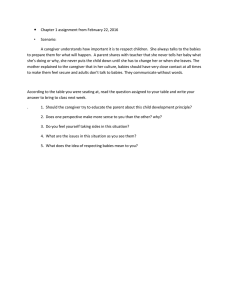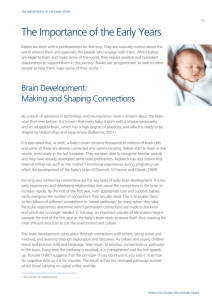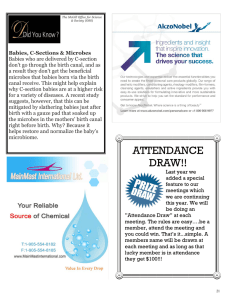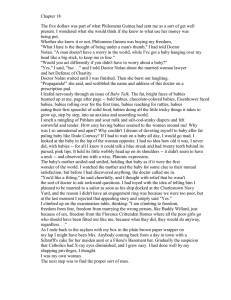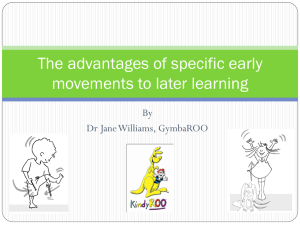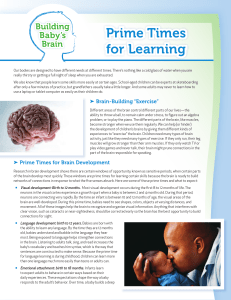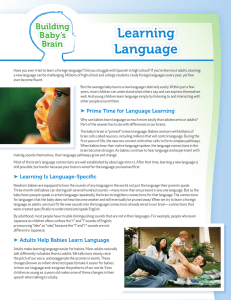Sign Language for Infants - Emily A. Spink Portfolio
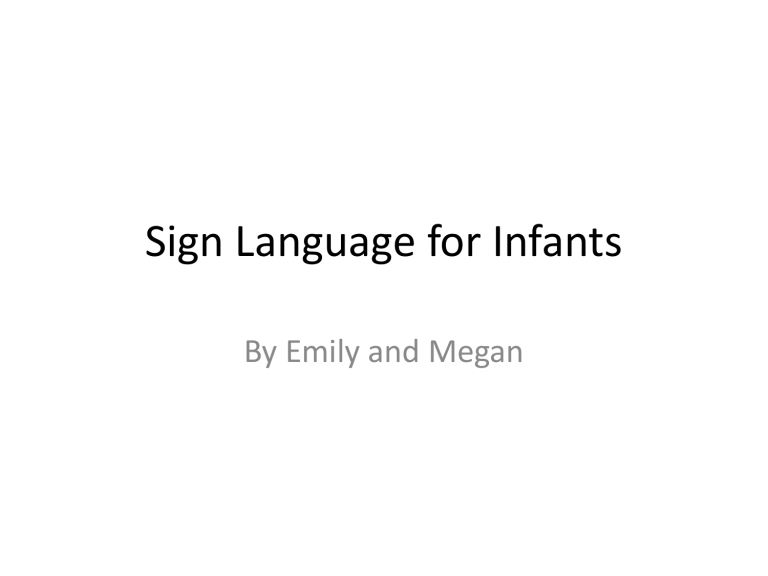
Sign Language for Infants
By Emily and Megan
Why teach children Sign Language
• Greatest human need is to be understood
• First natural forms of communication
• All babies use their hands to communicate before they can speak
• Babies no longer have to cry for what they want or need
• Signing is a bridge to speech
• Fine motor skills in hands develop faster than their muscles required for speech
Benefits
• Learn more about the world at an early age
• Babies that can sign are less frustrated because they can communicate exactly what they want and influence their word before being able to talk
• Less frustration for parents because they don’t have to guess what their child needs or wants
• More time interacting in a positive way
Long Term Benefits
• Signing babies speak sooner and more likely will have a higher vocabulary once they begin to speak
• Babies that used signs proverbially have scored higher on IQ test
• 9 year olds will typically score 12 points higher one IQ test
What babies need to be able to do before learning Sign Language
• If baby can wave, point, clap hands baby can learn to sign
• Parents should start doing the signs before baby can imitate them because it helps to become familiar with it
What a parent should do
• Start off with a few signs and use the sign in daily routines
• Make the sign every time you say the word
• Once the infant mastered a sign add a new sign
• Say the word every time you make the sign to keep the strong connection between sign and word
• Sleep
• Bed
• Milk
• All done
• Change
• Food/Eat
• Thirsty
• Bath
• More
Needs
• Come here
• Wait
• No
• Yes
• Stop
Commands
• Thank you
• Your Welcome
• Please
• Sorry
Manners
• Mom
• Dad
• Sister
• Brother
• Baby
• Girl
• Boy
Family
• Phone
• Book
• Cookie
• Hug
• Kiss
• I love you
Fun Words
Quiz
1. Which develops first fine motor skills in hands or muscles in mouth? Fine Motor Skills
2. What is one benefit for teaching signs to babies?
See Slide 3
3. What should a parent do to help their child learn the signs? See Slide 6
4. How many signs was the child in the video able to do? 30
5. Cookie
6. Book
7. Please more milk
8. No thank



